Least Developed Countries

Least Developed Countries (LDCs or Fourth World countries) are countries which according to the United Nations exhibit the lowest indicators of socioeconomic development, with the lowest Human Development Index ratings of all countries in the world. A country is classified as a Least Developed Country if it meets three criteria[1] based on:
- low-income (three-year average GNI per capita of less than US $750, which must exceed $900 to leave the list)
- human resource weakness (based on indicators of nutrition, health, education and adult literacy) and
- economic vulnerability (based on instability of agricultural production, instability of exports of goods and services, economic importance of non-traditional activities, merchandise export concentration, and handicap of economic smallness, and the percentage of population displaced by natural disasters)
Countries may "graduate" out of the LDC classification when indicators exceed these criteria. The United Nations Office of the High Representative for the Least Developed Countries, Landlocked Developing Countries and Small Island Developing States coordinates UN support and provides advocacy services for Least Developed Countries.
The classification currently (as of April 16, 2008) applies to 49 countries.[2]
In 2007, the United Nations graduated Cape Verde from the category of Least Developed Countries. This is only the second time it has happened to a country.[3] The first country to graduate from LDC status was Botswana in 1994. Samoa may become the third country to graduate in this manner [4], with a decision on this issue scheduled for As of 2008[update].
Contents |
Usage and abbreviations
Least developed countries can be distinguished from developing countries, "less developed countries", "lesser developed countries", or other terms for countries in the so-called "Third World". Although many contemporary scholars argue that "Third World" is outdated, irrelevant or inaccurate, others may use the term "Fourth World" in reference to least developed countries (although Fourth World is also used to refer to stateless ethnic groups). The term "less economically developed country" (LEDC) is also used today.
However, in order to avoid confusion between "least developed country" and "less developed country" (which may both be abbreviated as LDC), and to avoid confusion with landlocked developing country (which can be abbreviated as LLDC), "developing country" is generally used in preference to "less developed country". Least developed countries suffer conditions of extreme poverty, ongoing and widespread conflict (including civil war or ethnic clashes), extensive political corruption, and lack political and social stability. The form of government in such countries is often authoritarian in nature, and may comprise a dictatorship, warlordism, or a kleptocracy. AIDS is a major issue in a lot of these countries. The majority of LDCs are in Sub-Saharan Africa.
Note, however, that the above characteristics generally do not apply to LDCs located in Oceania. Kiribati, Samoa, Tuvalu and Vanuatu are politically stable democracies, and lack any form of civil or ethnic strife. Nor are they strongly affected by AIDS. Although they have small economies, often dependent on monocultures, the population generally does not suffer from extreme poverty, thanks to an enduring subsistence sector in the economy. The Solomon Islands is the only Oceanian LDC currently affected by political instability and ethnic tension. In 2006, the United Nations recommended that Samoa be upgraded from LDC status to that of Developing Country. The Samoan government disagreed, and asked for a review of the recommendation.[4] Samoa retains LDC status, pending a decision scheduled for 2008.
During the last United Nations review in 2003, the UN defined LDCs as countries meeting three criteria, one of which was a three-year average estimate of gross national income (GNI) per capita of less than US $750. Countries with populations over 75 million are excluded.[5]
Trade and LDCs
Issues surrounding global trade regulations and LDCs have gained a lot of media and policy attention thanks to the recently collapsed Doha Round of WTO negotiations being termed a development round. During the WTO's Hong Kong Ministerial, it was agreed that LDCs could see 100 percent duty-free, quota-free access to U.S. markets if the round were completed. But analysis of the deal by NGOs found that the text of the proposed LDC deal had substantial loopholes that might make the offer less than the full 100 percent access, and could even erase some current duty-free access of LDCs to rich country markets.[6][7] Dissatisfaction with these loopholes led some economists to call for a reworking of the Hong Kong deal.[8]
Dr. Chiedu Osakwe, as of 2001 the Director, Technical Cooperation Division at the Secretariat of the World Trade Organization, and adviser to the Director-General on developing country matters, was appointed as the WTO Special Coordinator for the Least Developed Countries beginning in 1999.[9] He worked closely with the five other agencies that together with the WTO constitute the Integrated Framework of action for the Least Developed Countries. They addressed issues of market access, special and differential treatment provisions for developing countries, participation of developing countries in the multilateral trading system, and development questions, especially the interests of developing countries in competition policy.[10]
Current LDCs
Africa (33 countries)
 Angola
Angola Benin
Benin Burkina Faso
Burkina Faso Burundi
Burundi Central African Republic
Central African Republic Chad
Chad Comoros
Comoros Democratic Republic of the Congo
Democratic Republic of the Congo Djibouti
Djibouti Equatorial Guinea
Equatorial Guinea Eritrea
Eritrea Ethiopia
Ethiopia Gambia
Gambia Guinea
Guinea Guinea-Bissau
Guinea-Bissau Lesotho
Lesotho Liberia
Liberia Madagascar
Madagascar Malawi
Malawi Mali
Mali Mauritania
Mauritania Mozambique
Mozambique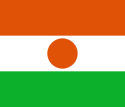 Niger
Niger Rwanda
Rwanda Sao Tome and Principe
Sao Tome and Principe Senegal
Senegal Sierra Leone
Sierra Leone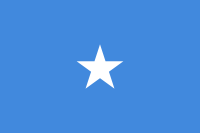 Somalia
Somalia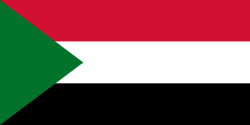 Sudan
Sudan Tanzania
Tanzania Togo
Togo Uganda
Uganda Zambia
Zambia
Eurasia (10 countries)
 Afghanistan
Afghanistan Bangladesh
Bangladesh Bhutan
Bhutan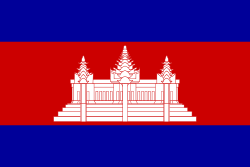 Cambodia
Cambodia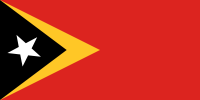 East Timor
East Timor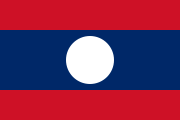 Lao People’s Democratic Republic
Lao People’s Democratic Republic Maldives
Maldives Burma
Burma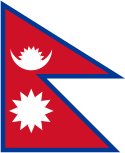 Nepal
Nepal Yemen
Yemen
Central & South America (1 country)
Oceania (5 countries)
Graduated LDCs
 Botswana (in 1994)
Botswana (in 1994) Cape Verde (in 2007)
Cape Verde (in 2007)
See also
- Development geography
- Development economics
- Economic development
- Heavily Indebted Poor Countries
|
|||||||||||||||||||||||||
Notes
- ↑ UN-OHRLLS The Criteria for the identification of the LDCs.
- ↑ About LDCs, Least Developed Countries, UN-OHRLLS. Accessed on line April 16, 2008.
- ↑ "UN advocate salutes Cape Verde’s graduation from category of poorest States", UN News Centre, 14 June 2007.
- ↑ 4.0 4.1 Samoa - Department of Foreign Affairs and Trade
- ↑ LDCs Default Page
- ↑ Public Citizen | Global Trade Watch | Global Trade Watch - Hot Issue June 21 - Study shows WTO’s Doha Round proposal would leave many poor countries worse off
- ↑ http://www.unnayan.org/Other/Unnayan_Onneshan_TNLP_Hong_Kong.pdf
- ↑ International Food Policy Research Institute - Error 404 Redirect page
- ↑ World Trade Organization, "Moore announces key appointments for development issues", 1999 Press Releases, Press/136, 13 September 1999
- ↑ Osakwe, Chiedu, "Are WTO Members wrestling an octopus, did they set their sights too high?", DAC News Nov-Dec 2005, Development Assistance Committee, OECD.
- ↑ Country profiles, Least Developed Countries, UN-OHRLLS. Accessed on line April 16, 2008.
Further reading
- United Nations, "LDCs: Least Developed Countries, Landlocked Developing Countries, and Small Island Developing States"
- World Trade Organisation, "WTO Launches Trade Initiative for Least Developed Countries", FOCUS newsletter, WTO, Geneva, Switzerland, November 1997 issue 24.